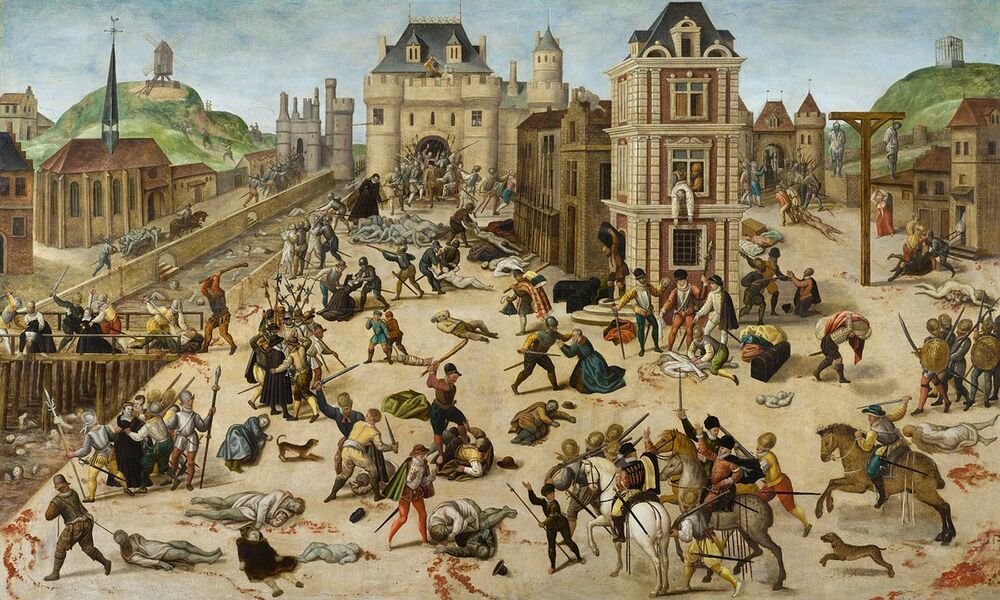Warsaw 1573 - St Bartholomew's Day Massacre
This famous image captures the brutal events of the St. Bartholomew’s Day Massacre in France on August 23-24, 1572, when thousands of Huguenots were killed in a single night by Catholic partisans due to religious tensions. This massacre ignited a new wave of violent conflict, leading to the Fourth French War of Religion. On November 6, 1572, King Charles IX launched an attack on the Huguenot stronghold of La Rochelle, a conflict that persisted until July 1573 and concluded with the Edict of Boulogne. These events in France also resonated in Poland, where, following the Warsaw Confederation in January 1573, King Charles’s brother, Henri de Valois, became a candidate for the Polish throne. Elected in May 1573, Henri was required to pledge his support for agreements that included the religious tolerance outlined in the Warsaw Confederation.
For context, in 1573, Poland-Lithuania was one of the largest countries in Europe, unified since 1569 through the Union of Lublin. This vast state was home to a wide range of religious groups, including Catholics, Orthodox Christians, Muslims, and Jews. From the mid-16th century, it had also become a refuge for various Protestant communities, such as Reformed Calvinists, Lutherans, and the Bohemian Brothers, who had fled religious persecution in other parts of Europe, making Poland-Lithuania a distinctly multi-faith society. Politically, the king stood at the head of the system, but power was also held by the influential nobility, nearly ten percent of the population, who were represented in the Senate and considered the state a “republic of nobles.” As an electoral monarchy, Poland-Lithuania required the nobles to choose a new king upon the death of King Sigismund II Augustus in 1572.
Why do you think the Polish nobility insisted on Henri’s commitment to the Confederation of Warsaw before being elected king of Poland?
Further information about The Confederation of Warsaw can be found at On Site, In Time.

